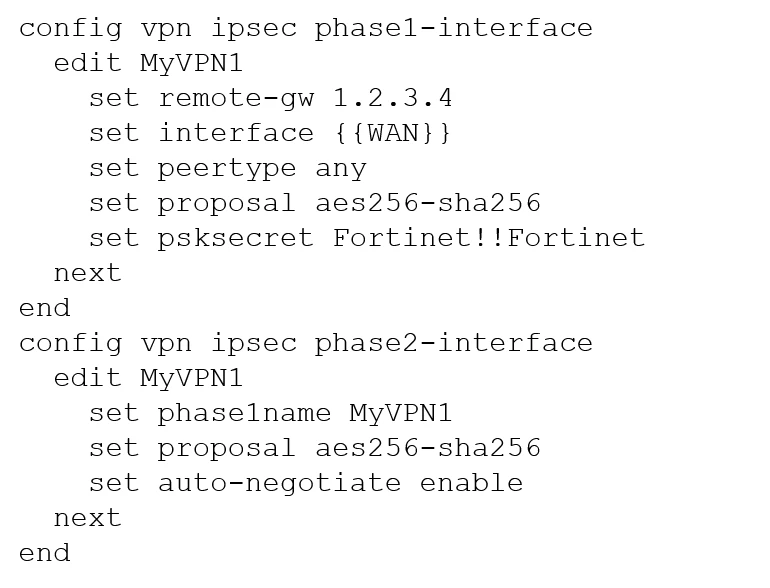
FortiManager is configured with the Jinja Script under CLI Templates shown in the exhibit.
Which two statements correctly describe the expected behavior when running this template? (Choose two.)

The expected behavior when running this template is that the template will work if you change the variable format to the correct Jinja syntax {{ WAN }}. Jinja templates use double curly braces {{ }} to enclose variables, which is the recognized syntax for variable substitution in Jinja. Additionally, the administrator must first manually map the interface for each device with a meta field. The meta fields are used to define specific values or interfaces that the Jinja template will use during execution. Therefore, for the given Jinja template to work properly, it must correctly reference these pre-defined meta fields.
To ensure low DNS resolution times on a FortiGate, it is crucial to direct the DNS query traffic efficiently. Configuring local out traffic to use the outgoing interface based on SD-WAN rules with the interface IP ensures that the FortiGate selects the optimal path for DNS requests. By setting an SD-WAN rule specifically to the DNS server, the FortiGate can dynamically choose the best link, enhancing DNS resolution performance and reducing latency effectively.
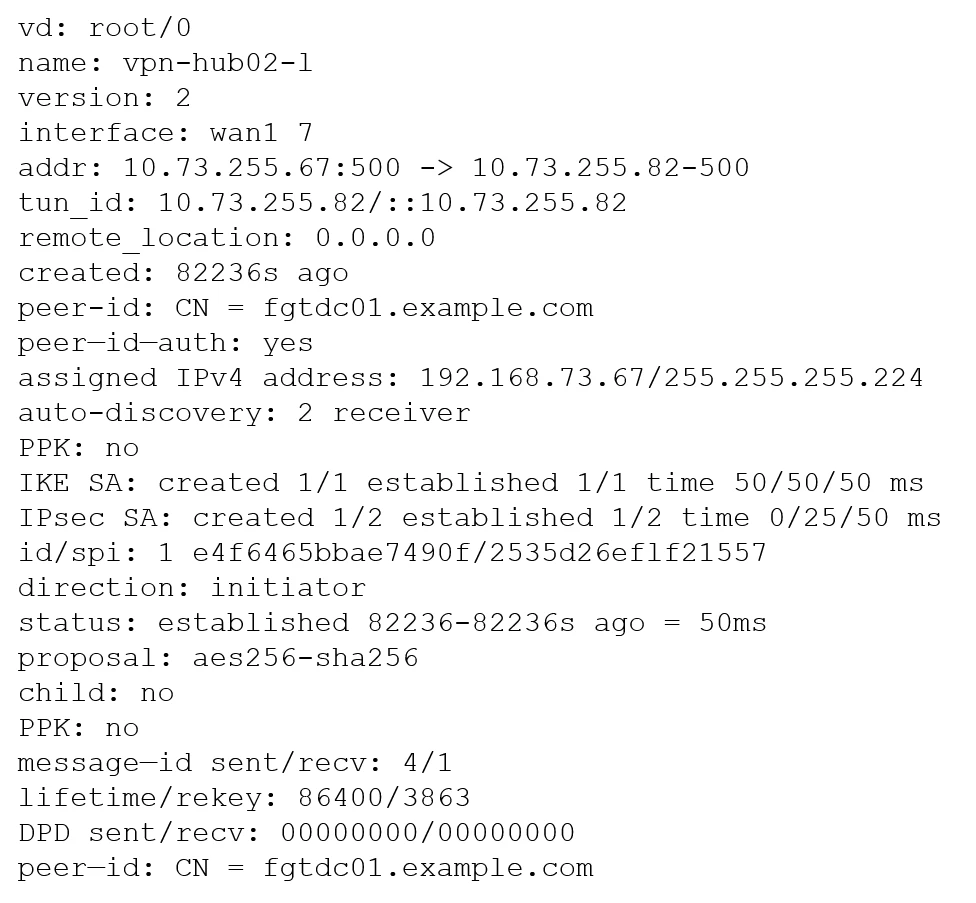
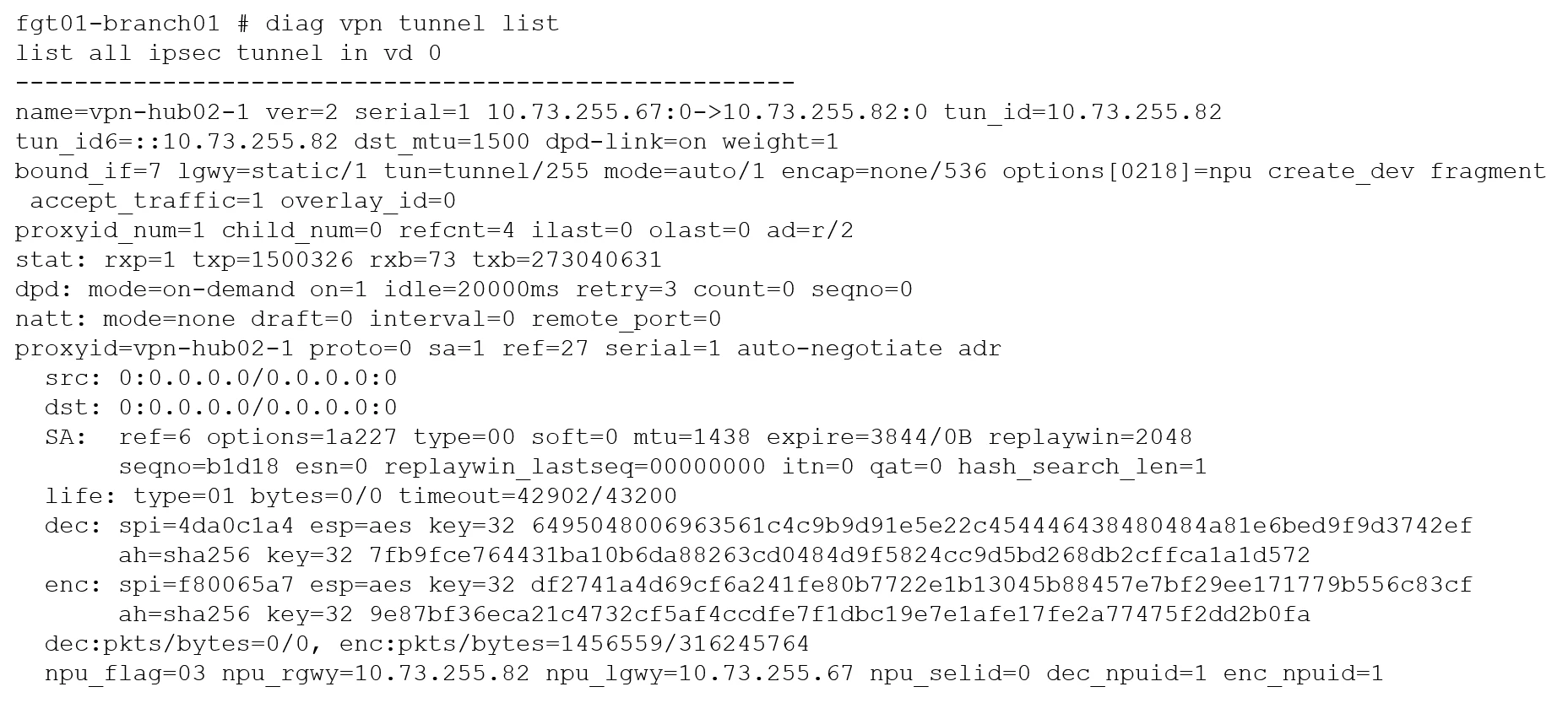
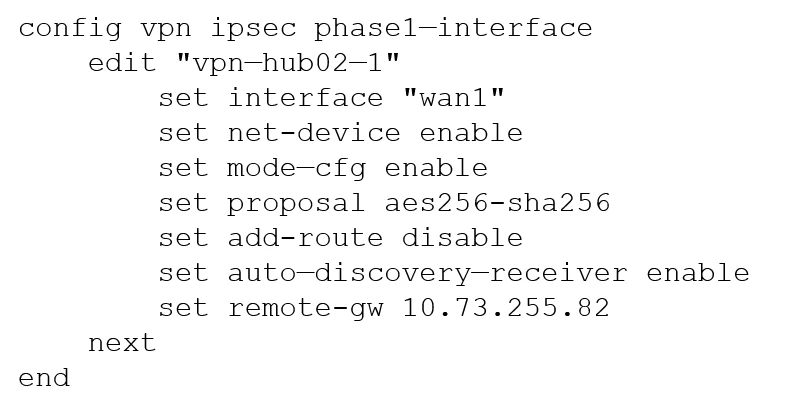
The configuration to restore VPN connectivity should accommodate the specific settings observed in the exhibits. Looking at Exhibit A and Exhibit B, we can see various parameters, such as the peer ID, the proposal 'aes256-sha256', and the necessity for NPU (Network Processing Unit) offloading indicated by 'npu_flag=03'. The configuration in Exhibit D matches these requirements, including NPU offloading and the correct use of 'aes256-sha256'. Therefore, the correct answer is the configuration that aligns with these settings, which is provided in option D.
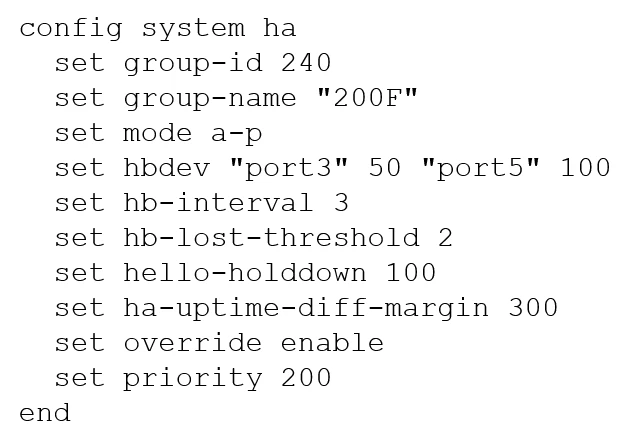
In the given configuration, the heartbeat interval (hb-interval) is set to 3. This is equivalent to 300 milliseconds (ms) because the default heartbeat interval is generally taken as 100 ms multiplied by the set interval value. The hb-lost-threshold is 2, which means the failover will be detected after 2 missed heartbeats. Therefore, the total time to detect a failover will be 2 times the hb-interval, which is 2 x 300 ms = 600 ms. Hence, the correct answer is 600 ms.


The configuration on FGT_2 with 'set fabric-object-unification local' indicates that objects will not be synchronized to or from FGT_2. Default setting means synchronization occurs between root FortiGate and downstream FortiGate devices. Since FGT_2's synchronization is set to local, it will not synchronize objects with any other device, not upstream to the root FortiGate nor downstream to FGT_3. Therefore, objects from the root FortiGate will not be synchronized to any downstream FortiGate.